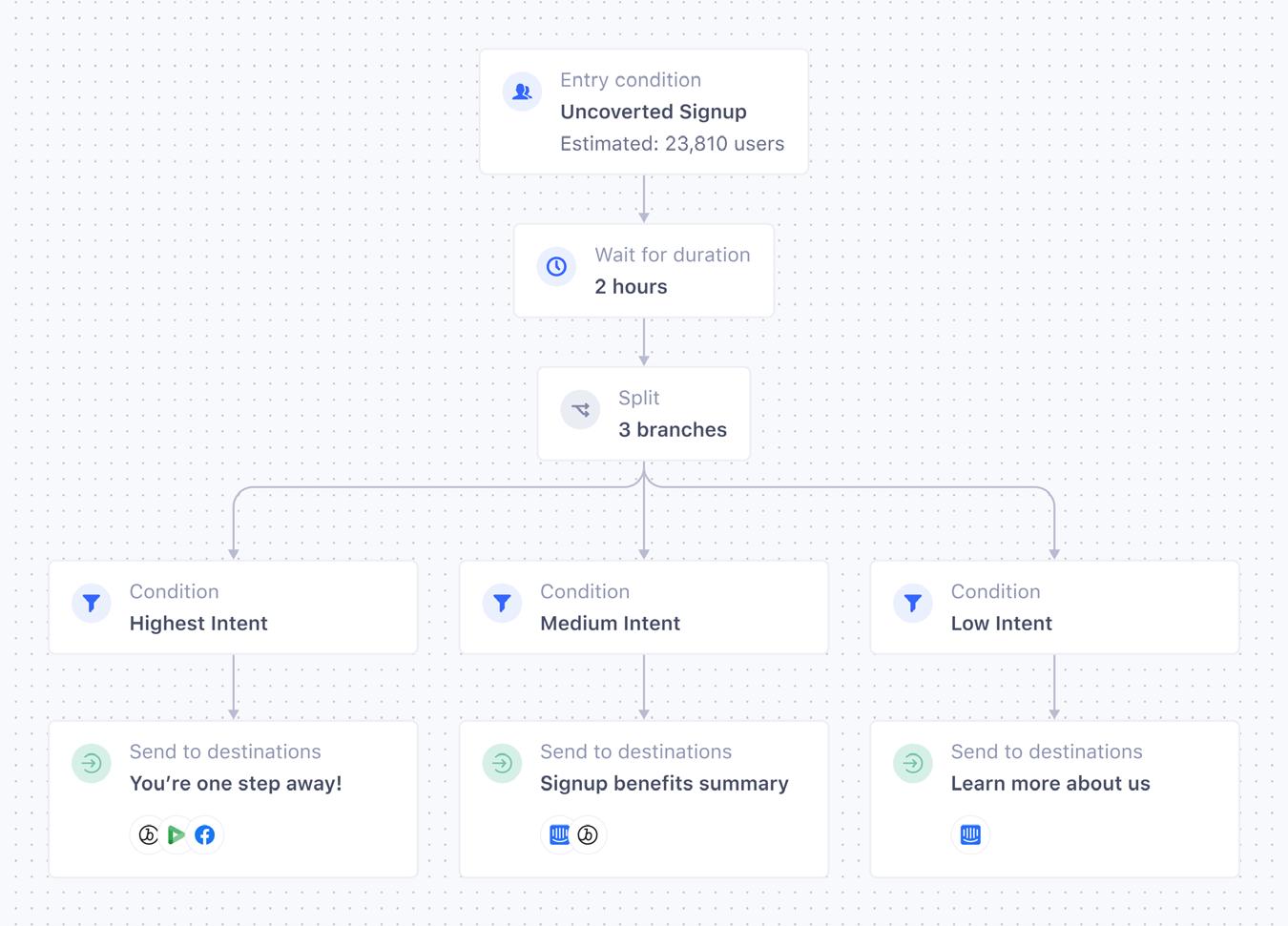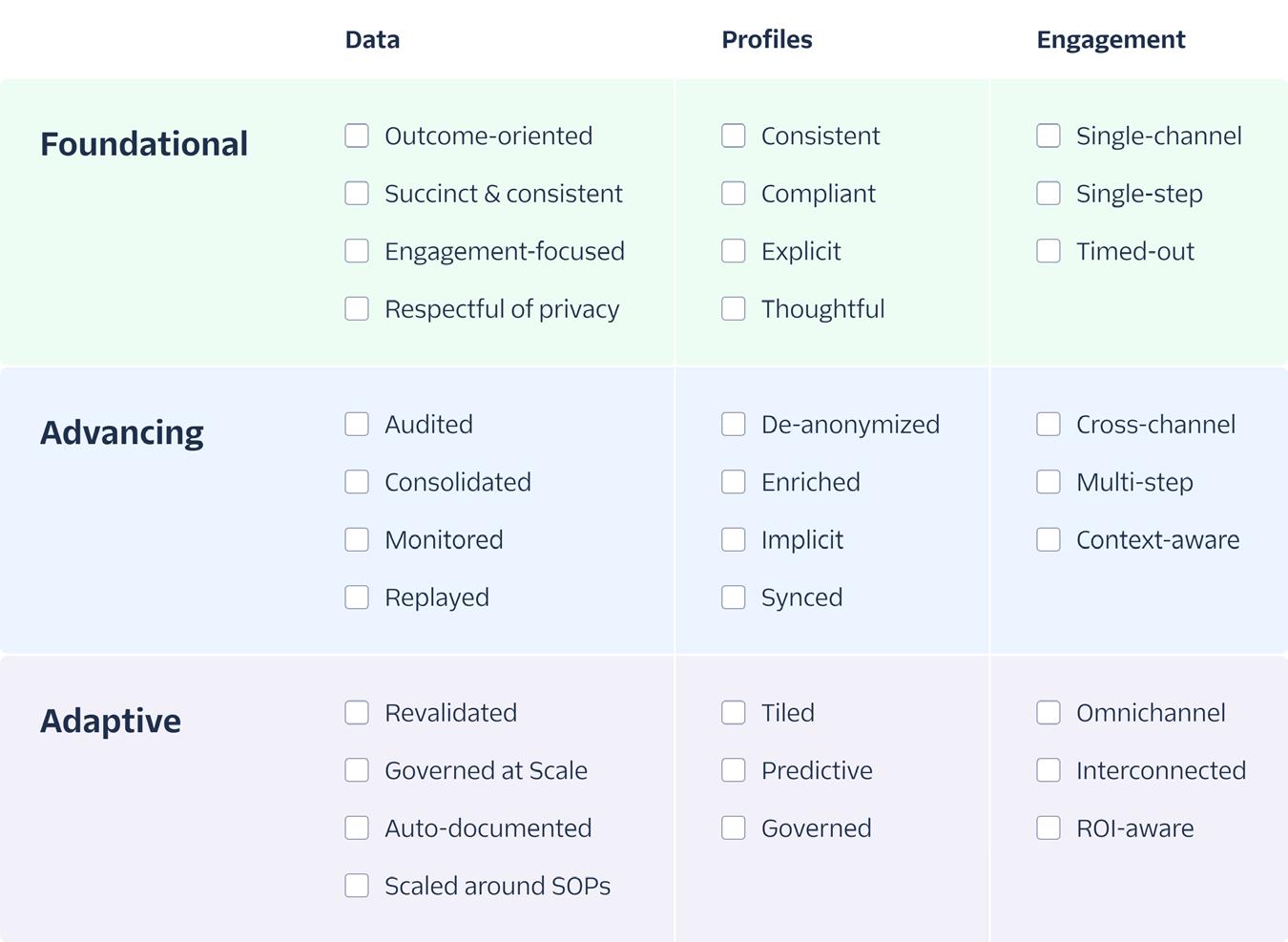
2 minute read
Acknowledgements
This deep dive into the world of Customer Data Maturity wouldn't have been possible without the editorial expertise of Geoffrey Keating and Kathleen Velasquez, the design of Schuyler MacFadyen and Keenan Brand, and the visionary guidance of Steve Davito, Katrina Wong, and George Chen. It takes teamwork to make the dream work, and this team is truly a dream to work with.
The dark age of data silos
Advertisement
Theterm “data driven” seems to be everywhere these days, describing everything from decision-making strategies to technical infrastructure to cultural initiatives. Yet behind this trendy buzzword lurks a very real struggle encountered by organizations of all sizes and industries: how to deliver compelling, personalized customer experiences while respecting privacy.
Your customers expect these experiences, yet many organizations struggle to meet those expectations because they’re relying on bad data, siloed tools, and fragmented engagement. An organization might invest in a few dozen tools for marketing automation, CRM/helpdesk, and analytics across the stack but any data that might be found in these disparate sources are siloed from one another.
When these tools aren’t integrated together, the organization as a whole is prevented from gaining a complete view of the customer. The partial view of the customer makes it impossible to deliver personalized experiences at scale, hindering your ability to attract or retain customers against your competitors.
Furthermore, bad data makes it difficult to assess, say, how to target the right audience on the right channels when building budgetconscious marketing campaigns. Marketing budgets are wasted targeting the wrong people because of bad data, and engineers spend most of their time on ETLs (Extract, Transform, and Load) rather than improving the core product.
We call this state of disorganization data immaturity. Failing to overcome the acute pain of disorganized data means being at a competitive disadvantage to those market players who invest the resources to deliver what customers want.
From silos to revenues
In reading this Customer Data Maturity guide, presumably your goal is to develop data strategies that actively unlock business opportunities. The hope is that eliminating these data silos will enable your business to deliver engaging, personalized customer experiences at scale, bolstering retention and cross-sell opportunities.
The path to data maturity first and foremost requires adopting a CDP (customer data platform) such as Twilio Segment to gain a complete understanding of your customer. Your CDP serves as the essential foundation of the modern data stack by integrating and organizing data from every data source, platform, and channel to create a unified customer profile.
From there, you can activate your data to deliver personalized customer engagement to the right customers on their desired channels, which carries the added benefit of efficiently focusing your marketing budget on targeted campaigns.
In this way, your CDP is an essential business acceleration tool that helps evolve organizations away from messy, siloed data and toward scaled leverage of robust customer profiles and insights which drive ROI.






